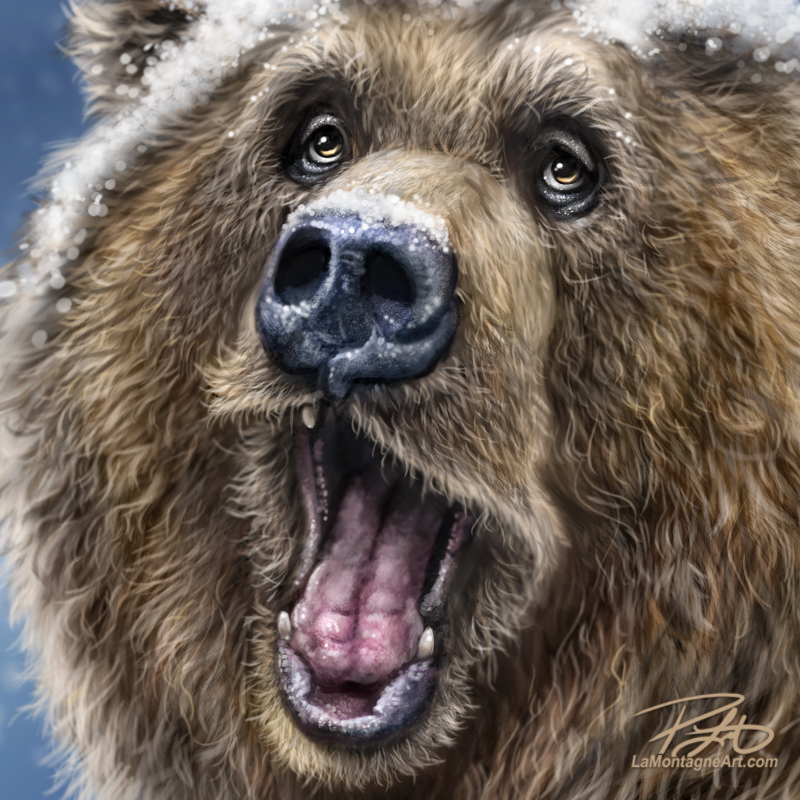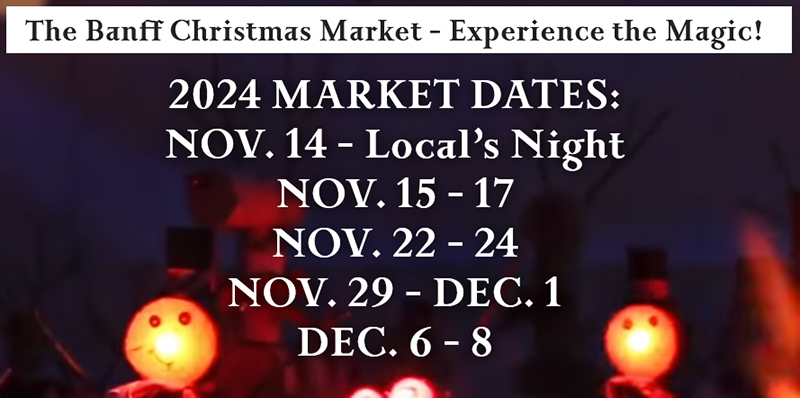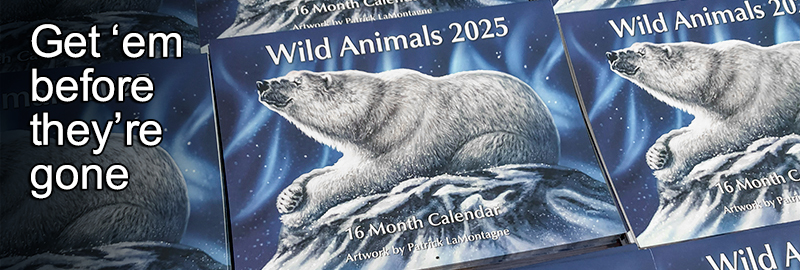
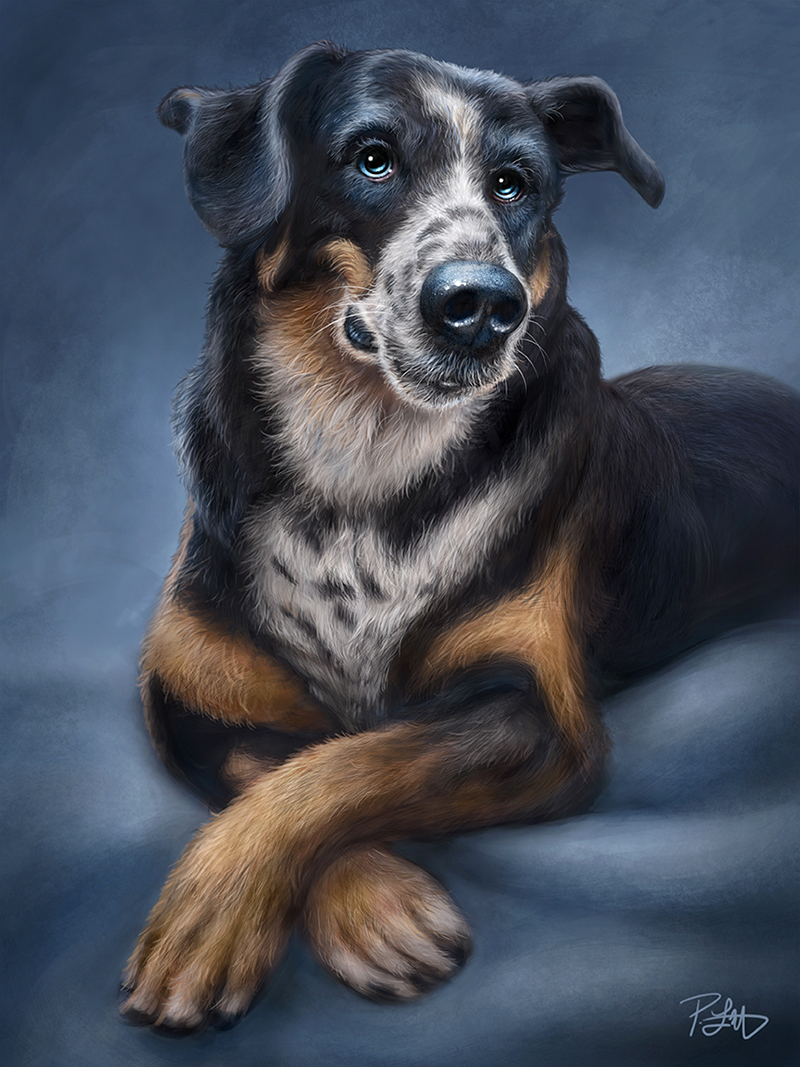
A few months ago, I was ready to start my next commission, but the next person on the waiting list, somebody I had painted for before, had a bunch of life stuff going on and didn’t have the bandwidth for a commission until the other stuff had been sorted. She agreed to let the next person in line jump the queue and I’d come back to her next.
The next in line was Pat, who’d already been waiting quite a while.
I first met Pat several years ago at Electric Grizzly, the Canmore tattoo shop owned by my buddy Derek Turcotte. I don’t actually remember our first meeting, but I got to know Pat as one of Derek’s clients. Derek is an enthusiastic supporter of other artists and has a few of my pieces hanging in his shop. Pat liked my whimsical wildlife and since then has collected several of my pieces. He has poster and matted prints, plus canvas, metal and acrylic in different sizes.
These are some of the ones hanging in his home.
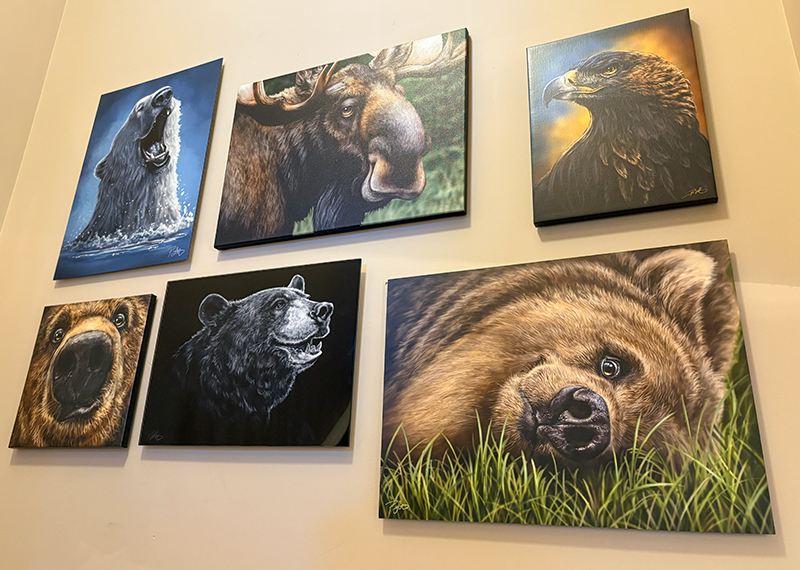 So he knew what he wanted when he asked me to paint 10-year-old Delta.
So he knew what he wanted when he asked me to paint 10-year-old Delta.
Because he lives in Calgary, I figured I could take my own reference photos. But on the day I set aside late this summer to go there, the check-engine light on my car came on several times before I had even left the mountains. I have a code reader and it let me know that one of my ignition coils was the culprit. Not wanting to risk damaging the car with misfires, I took it home, called my mechanic to get an appointment, and told Pat I couldn’t make it.
He was just about to start his next shift rotation at work, so I suggested that rather than wait for another day almost two weeks later, he could send me some photos he had so I could see if I could get started. I sent him a Dropbox link where he could upload them, and he dumped 400 photos into it. I’m not kidding.
If you think that’s overkill, I assure you, I did not. I was thrilled. Sometimes, especially if the portrait is a memorial, the problem is that I don’t get enough photos. And it’s not just about the likeness; it’s about seeing the character and personality in my subject. Pat has taken some incredibly good photos of his dog over her lifetime, from comical to serious, with several different poses.
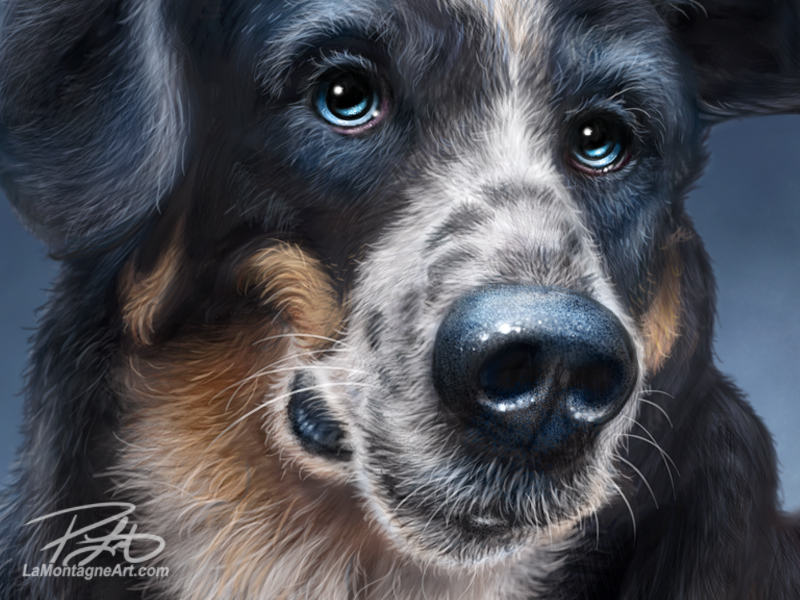
Just like when I take my own reference photos, I was quick to discard most of them, which still left a couple of dozen gems. Best of all, after more back and forth where I shared the ones I liked, Pat told me that Delta often sits with her paws crossed, something she’s done since she was a puppy. That pose was among my favourite photos, which is why he brought it up.
Anybody who does anything creative knows about happy accidents, those unexpected moments that give you something better than you could have planned. That engine part was going to fail anyway, but because it happened on the day I was going to take my own photos, I ended up with better reference than I would have shot myself. Of that, I have no doubt. And would I have found out about the crossed paws without seeing those photos Pat sent? Probably not.
I finished this painting on November 15th and sent the final image. I’m always nervous as I wait for the client’s response.
“I won’t sugar coat it. THIS IS AMAZING! It literally brought a tear to my eye, causing the delay in my reply. I’m blown away seeing Delta portrayed in your artistic style, I love it!”
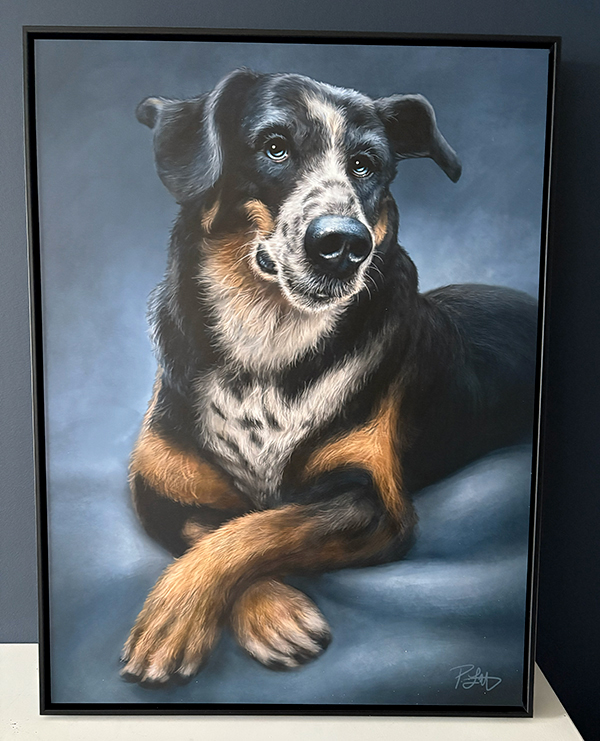
Every commission includes a professional 18″ x 24″ metal or canvas print. It also includes shipping, but I like to deliver it myself whenever I can, especially since it often means getting to meet my subject. OK, fine, my clients, too.
As he is familiar with all my print options and owns at least one of every style, he chose metal with a black frame. He also ordered an extra one for his Mom in Saskatchewan, and three more smaller canvases for each of his siblings.
I’ve had the prints in my home for a little while, as Pat was away and I was busy with the Banff Christmas Market. But I was thrilled to deliver them to his and Vanessa’s home in Calgary on Tuesday this week. Not only did I get to meet Delta, but also her younger brother Luke, and it sounds like I might be painting him down the road as well. Both dogs were very sweet and friendly.
Pat and Vanessa sent me home with some delicious homemade holiday treats and a very nice art print that I’m eager to hang in my office. I’m going to take it in for framing next week and will share that later.
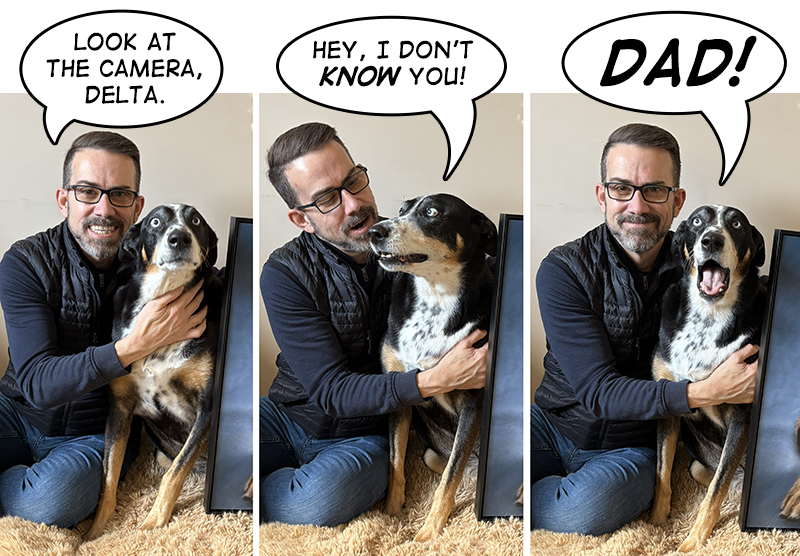
I’m so fortunate that my commission clients have all been so great to work with. As they’re most often already invested in my work, usually own some pieces already, and have read all about what’s involved from posts like this one, the experience is one I enjoy. It’s collaborative and a joint effort, which means the end result always feels more special than just “Here’s a picture, draw my dog.”
This was no different, and I loved painting Delta. Pat was great to work with and exceptionally patient, knowing it was already a very busy time of year for me. He didn’t have a deadline, and this wasn’t a “must be done by Christmas,” but I’m still glad it was anyway. It’s a nice way to end my year, working with a great client and creating a painting I’m pleased with.
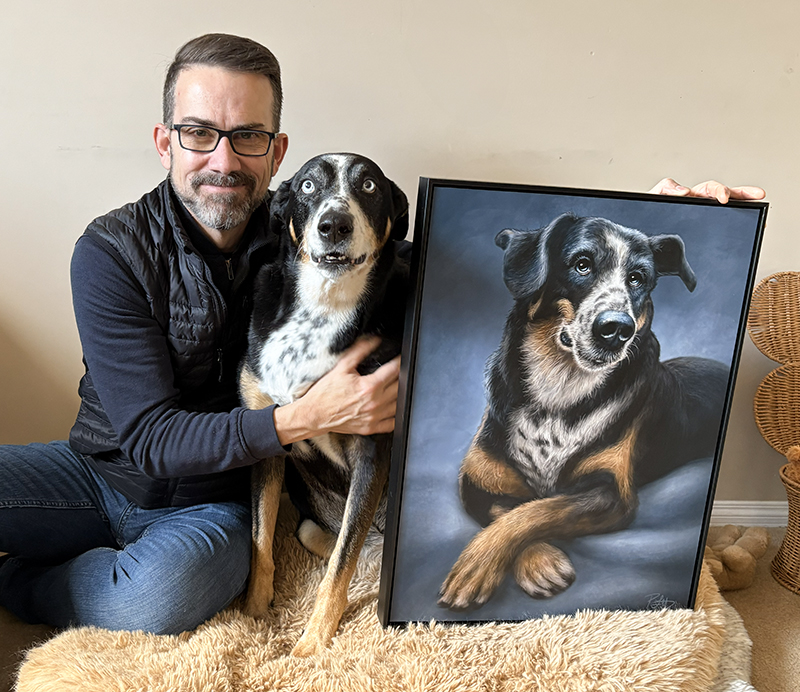 I’ve already got my next few commissions lined up and will start the next one right away in January, but Delta felt like the right way to close out this year.
I’ve already got my next few commissions lined up and will start the next one right away in January, but Delta felt like the right way to close out this year.


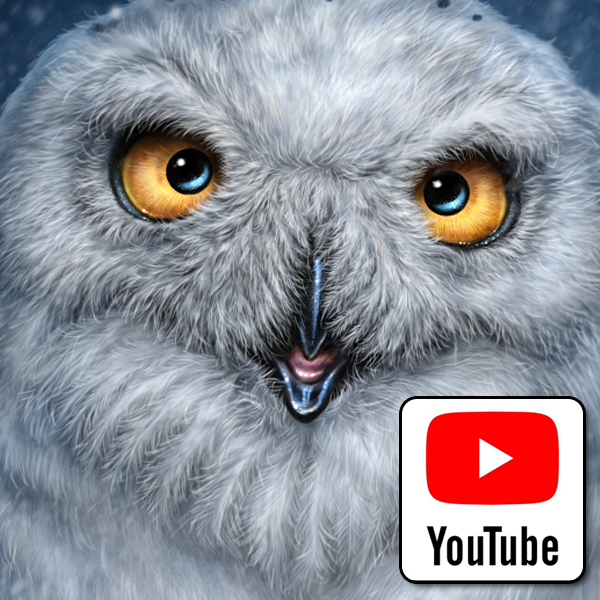
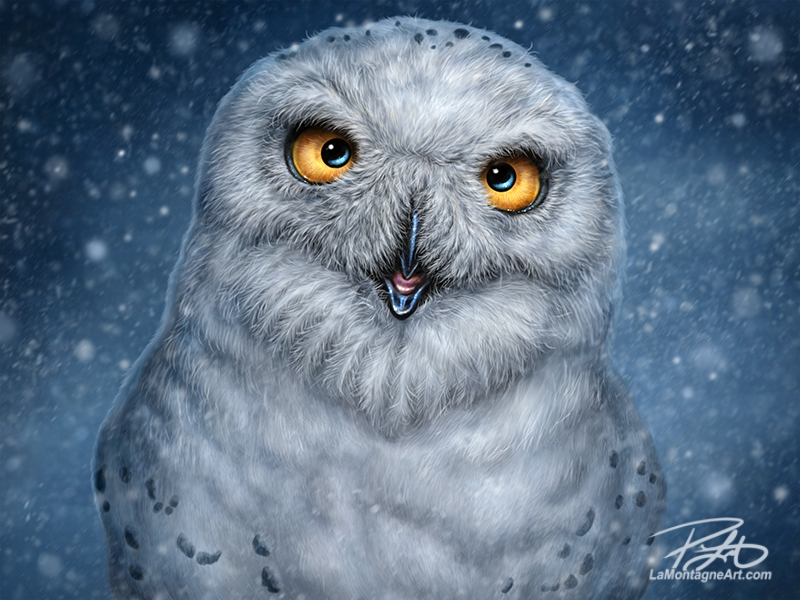

 The cover features one of my favourite new paintings, The Grizzlies. Inside you’ll find a mix of new pieces and some perennial bestsellers. I’ll let you know when they’re available.
The cover features one of my favourite new paintings, The Grizzlies. Inside you’ll find a mix of new pieces and some perennial bestsellers. I’ll let you know when they’re available.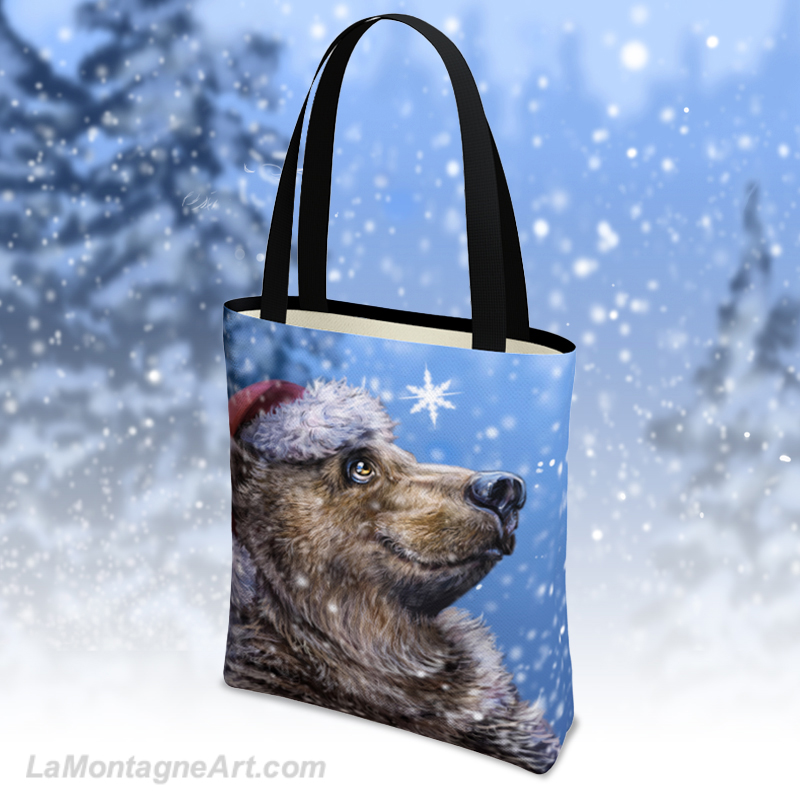 I had thought about doing a subscriber pre-order, but to be blunt, I don’t trust that Canada Post won’t strike again for the holidays. If that happened, I’d be stuck with prepaid orders I couldn’t ship and a pile of unhappy customers. Rather than risk it, I bit the bullet, paid for the order myself, and will sell them in person and online as long as stock lasts.
I had thought about doing a subscriber pre-order, but to be blunt, I don’t trust that Canada Post won’t strike again for the holidays. If that happened, I’d be stuck with prepaid orders I couldn’t ship and a pile of unhappy customers. Rather than risk it, I bit the bullet, paid for the order myself, and will sell them in person and online as long as stock lasts.
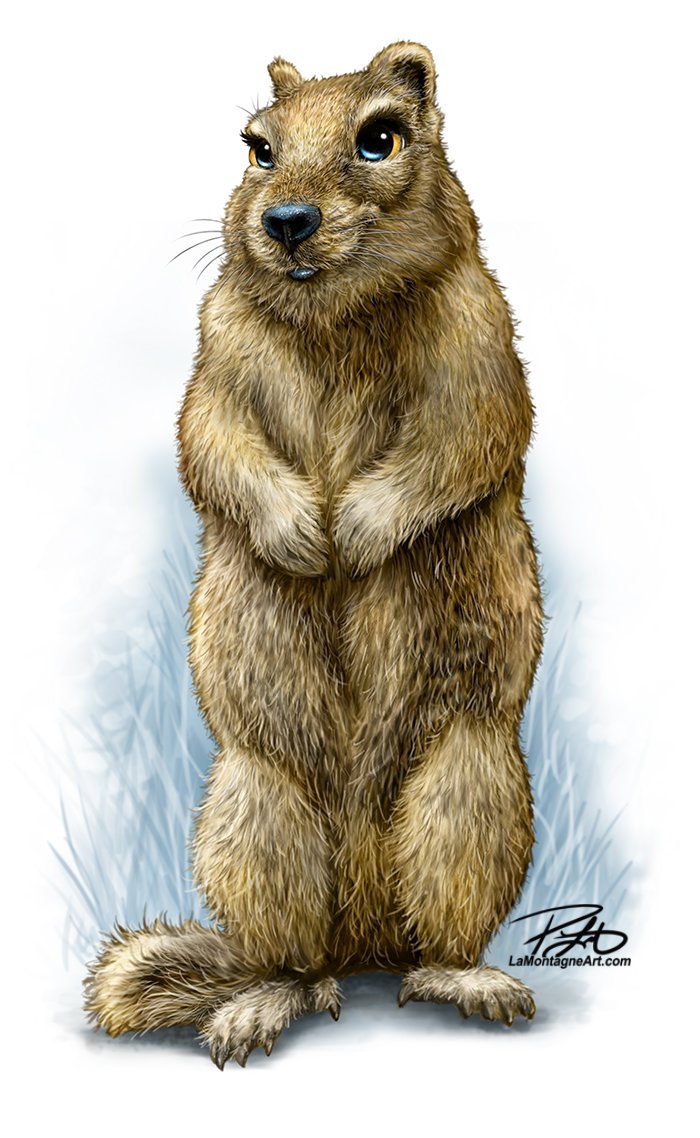 After wrapping up the three-cat commission I’ve been working on (and talking about) for the past couple of months, I needed a reset. Not a full break—but something without expectations, pressure, or deadlines. Just a chance to paint for myself again.
After wrapping up the three-cat commission I’ve been working on (and talking about) for the past couple of months, I needed a reset. Not a full break—but something without expectations, pressure, or deadlines. Just a chance to paint for myself again.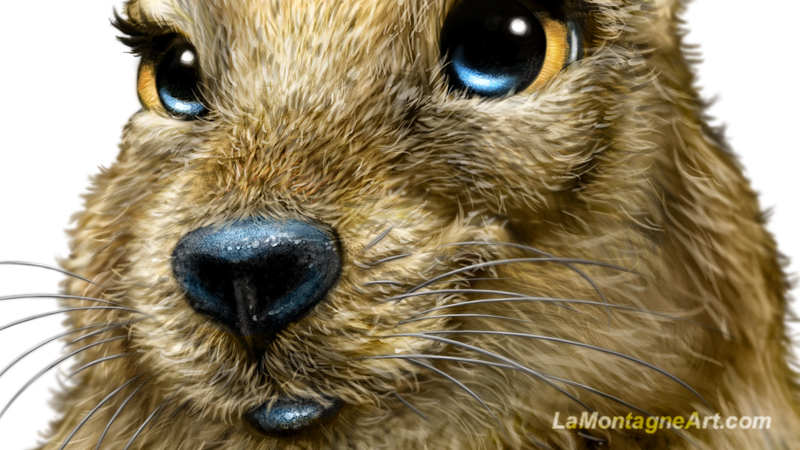
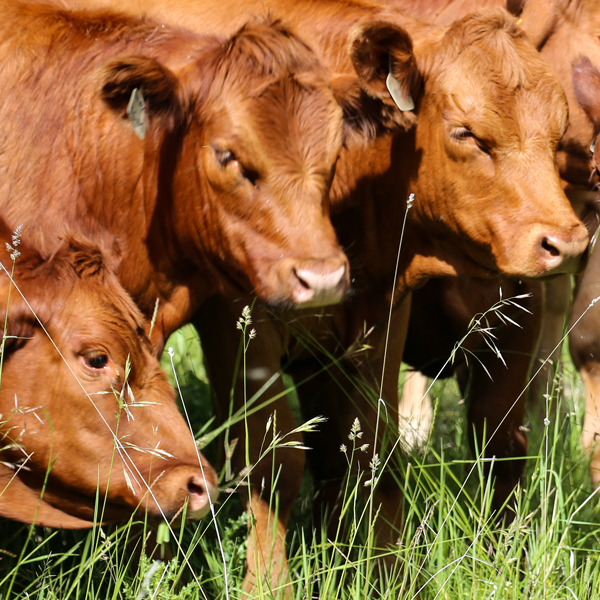
 When people talk about art for a living, they usually mean the highlights—the big launches, the finished pieces, the stuff that looks good on a timeline. But this—the half-finished paintings, the licensing negotiations, the time made for ideas—this is the work.
When people talk about art for a living, they usually mean the highlights—the big launches, the finished pieces, the stuff that looks good on a timeline. But this—the half-finished paintings, the licensing negotiations, the time made for ideas—this is the work.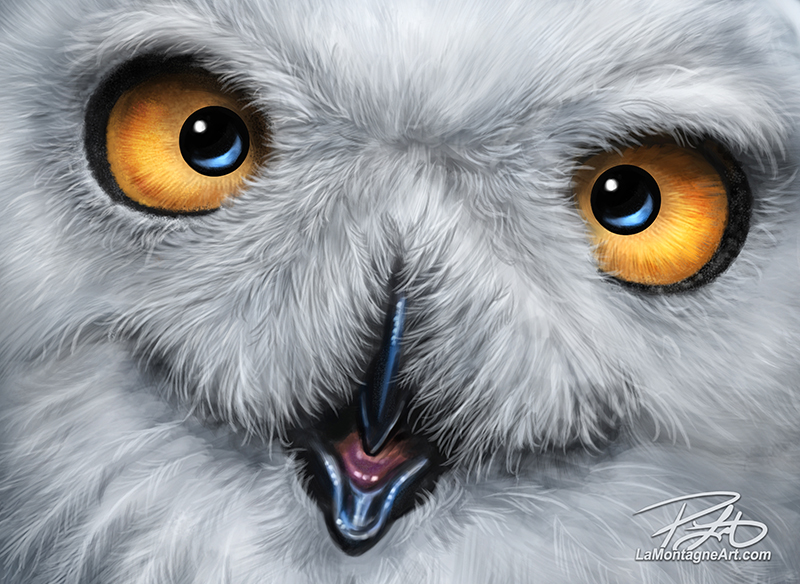
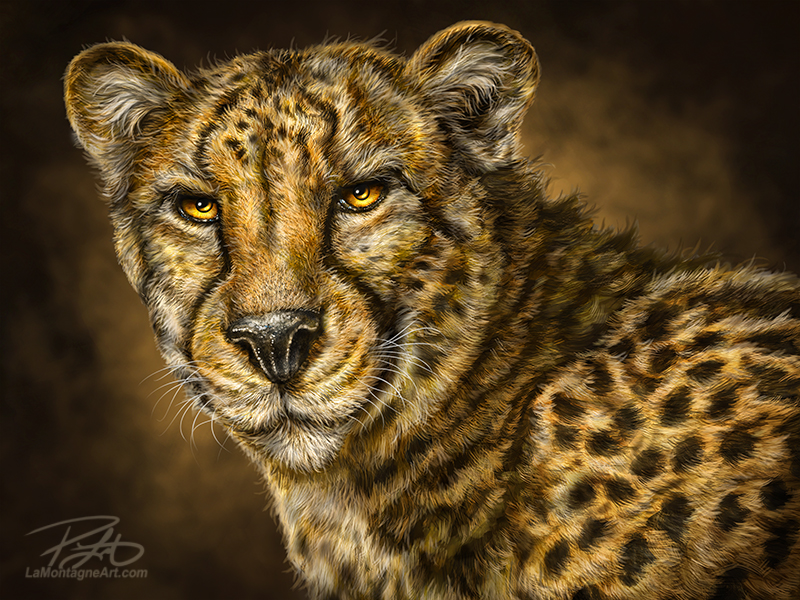
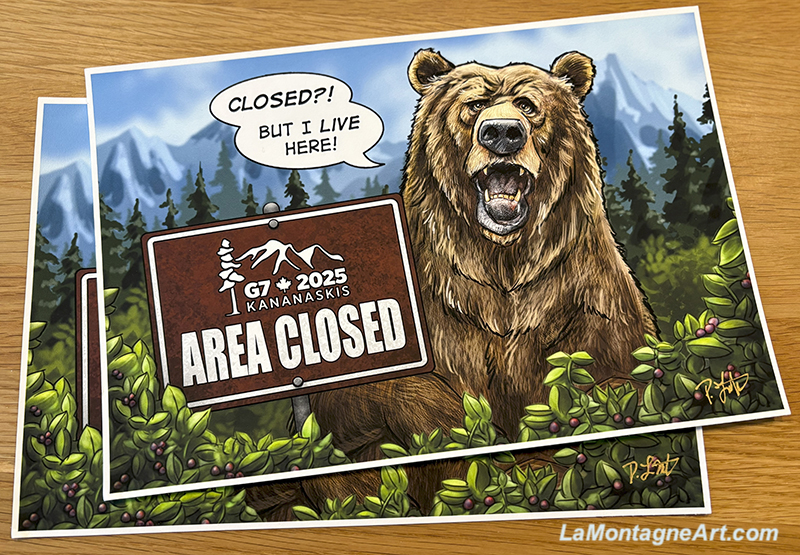 This particular cartoon also featured a grizzly bear—so the best of both worlds. I signed both prints and shipped them yesterday.
This particular cartoon also featured a grizzly bear—so the best of both worlds. I signed both prints and shipped them yesterday.
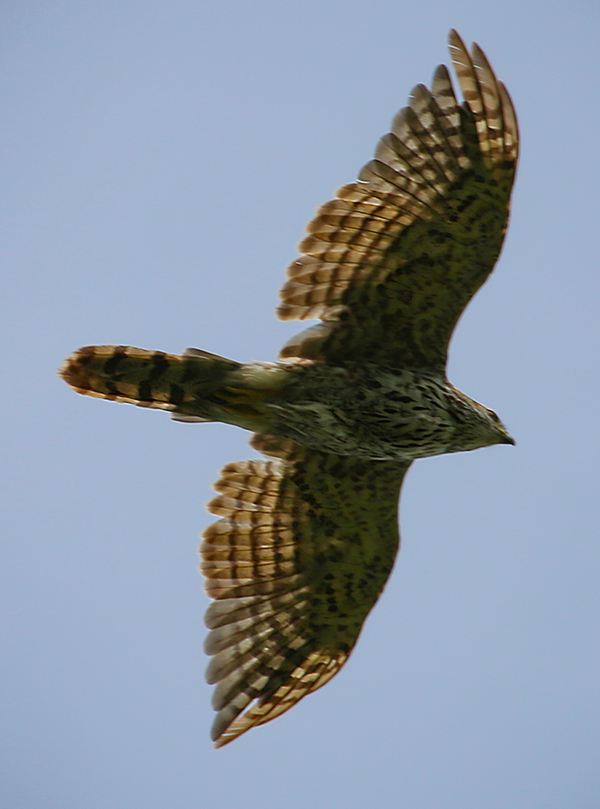 I’m always surprised when I sort through reference photos, because often something I thought I had, doesn’t look as good when I get home. And then a random throwaway photo might spark a painting.
I’m always surprised when I sort through reference photos, because often something I thought I had, doesn’t look as good when I get home. And then a random throwaway photo might spark a painting.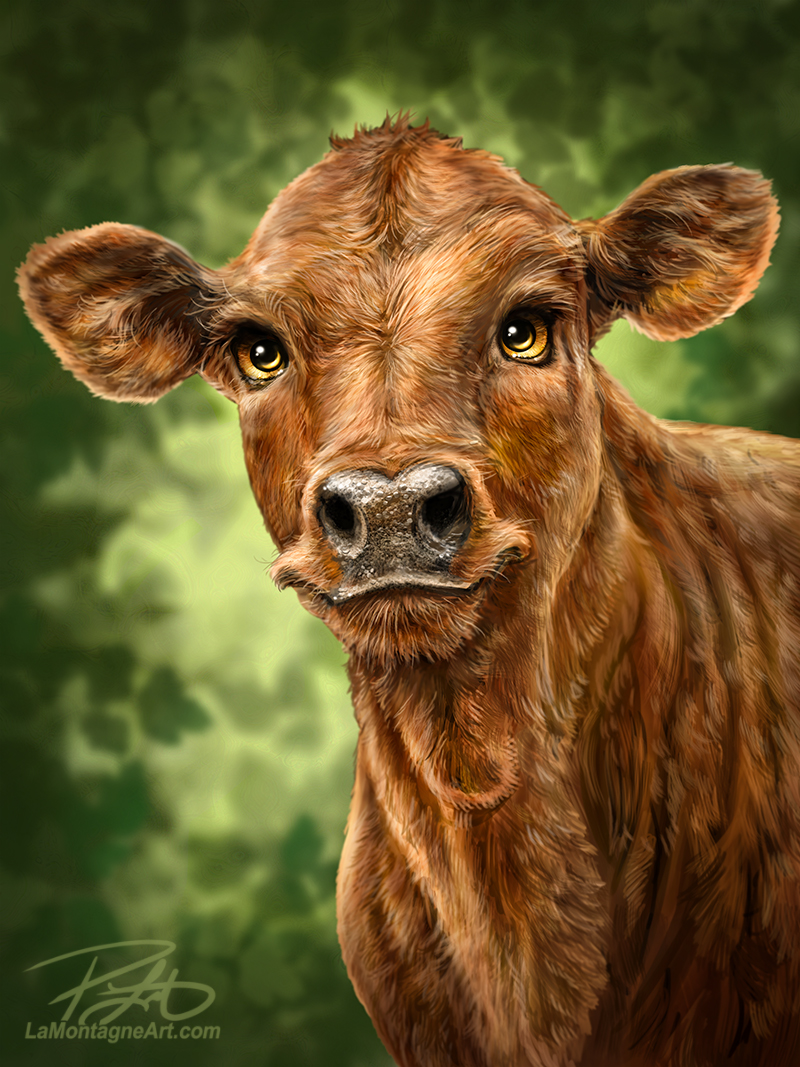 This little calf was painted from reference I took at the cabin a few years ago. I’ve since retired it because frankly it wasn’t popular, even though I enjoyed the work and like the painting. That happens a lot, where my favourites may not be your favourites.
This little calf was painted from reference I took at the cabin a few years ago. I’ve since retired it because frankly it wasn’t popular, even though I enjoyed the work and like the painting. That happens a lot, where my favourites may not be your favourites. But one evening on this visit, I noticed the neighbour’s cows hanging around his gate near the road, and shortly after this first pic, they clustered together and it struck me comical. So I took a bunch of photos, and though I’d work from several of the ones I shot, I think there’s a painting here. Already thinking about how long it would take, but this is a marathon, not a sprint.
But one evening on this visit, I noticed the neighbour’s cows hanging around his gate near the road, and shortly after this first pic, they clustered together and it struck me comical. So I took a bunch of photos, and though I’d work from several of the ones I shot, I think there’s a painting here. Already thinking about how long it would take, but this is a marathon, not a sprint.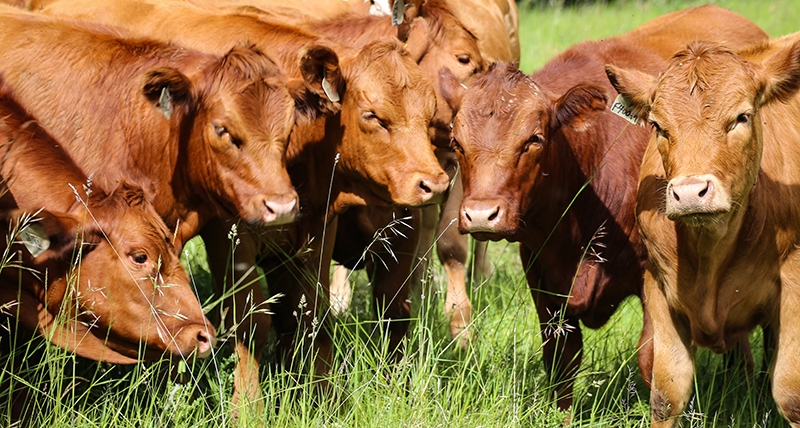 I’ll have to let it simmer a bit, but whenever I hear that voice whisper, “hey, look here,” I try to pay attention.
I’ll have to let it simmer a bit, but whenever I hear that voice whisper, “hey, look here,” I try to pay attention.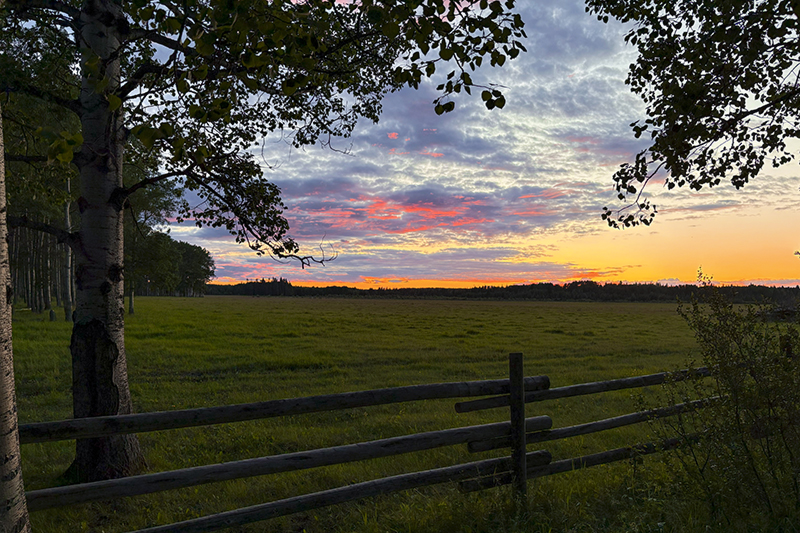 And while I still spent too much time in my own head, thinking about work and worrying about things I can’t control, the setting and company helped me turn down the volume for a few days.
And while I still spent too much time in my own head, thinking about work and worrying about things I can’t control, the setting and company helped me turn down the volume for a few days.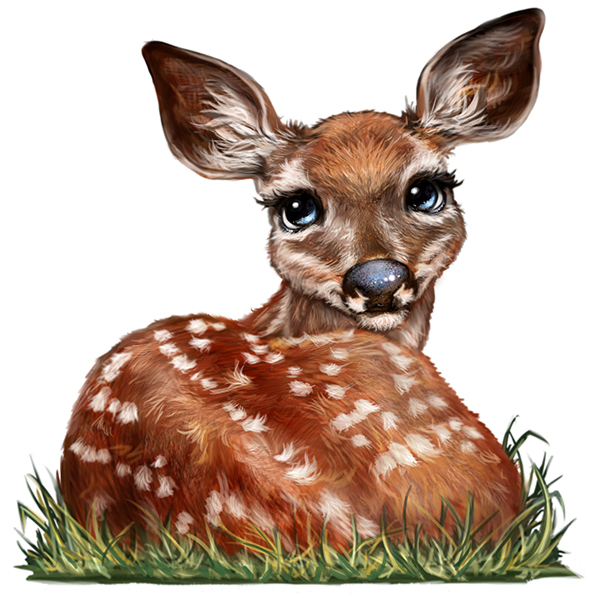
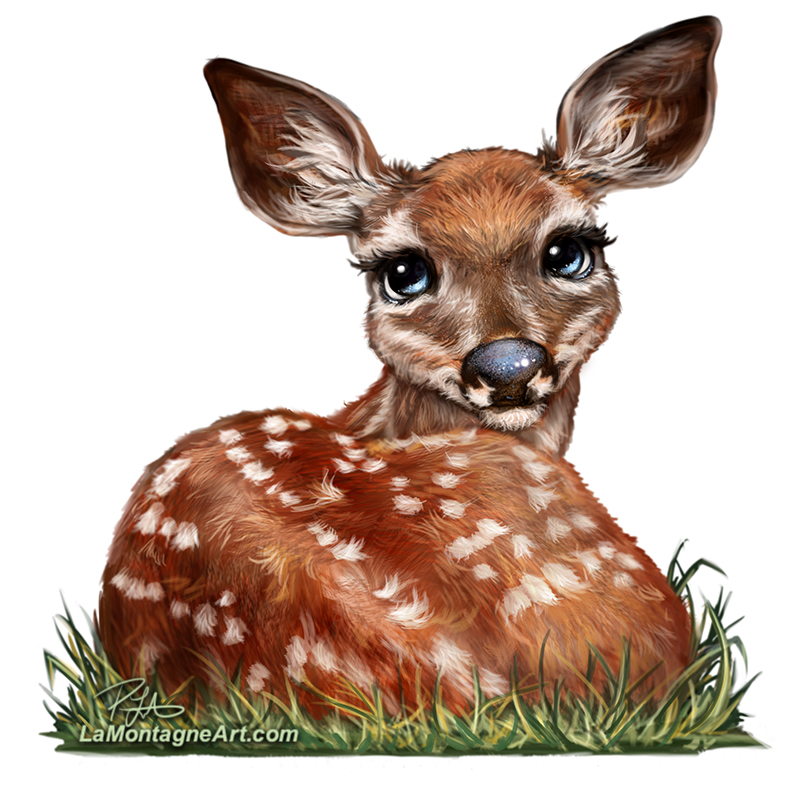 I’ve been working on a commission of three cats, and it’s coming along well. The client has provided some valuable feedback on the images I’ve shared so far. I’ve also recorded a bunch of the process, written the video narrative, and I’m still working on that video and the painting itself.
I’ve been working on a commission of three cats, and it’s coming along well. The client has provided some valuable feedback on the images I’ve shared so far. I’ve also recorded a bunch of the process, written the video narrative, and I’m still working on that video and the painting itself.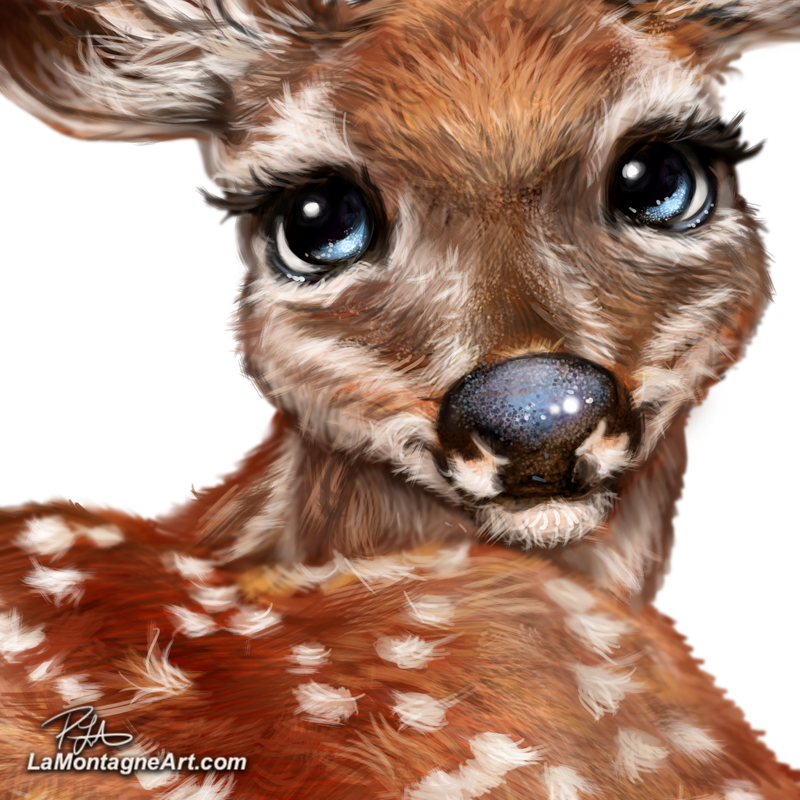 I based this little fawn on reference I shot at
I based this little fawn on reference I shot at 
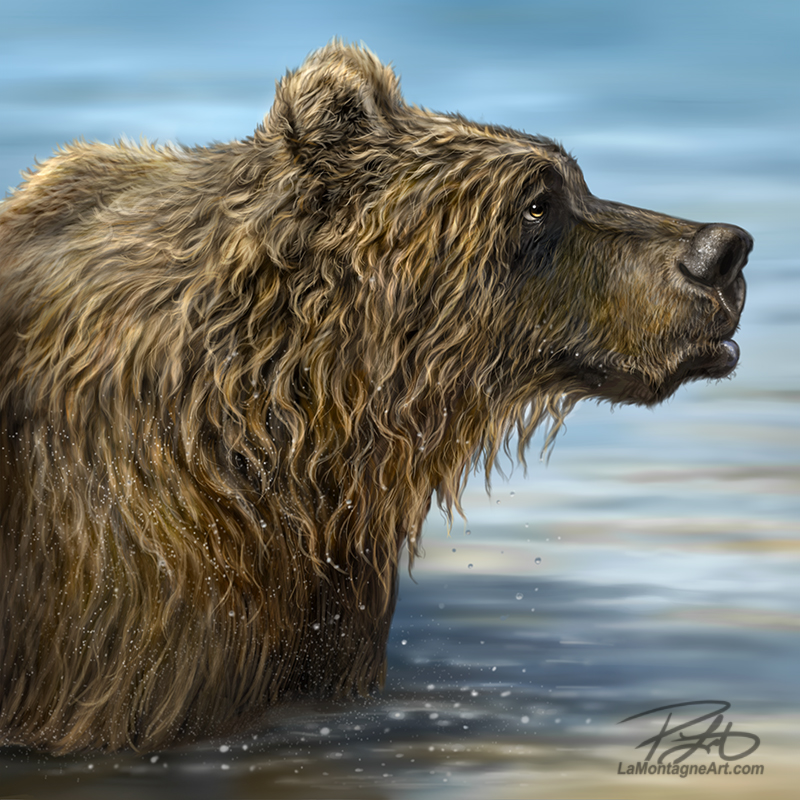 First, here’s a painting I just finished yesterday called Pouty Bear. Even though most of the animals I paint are smiling and happy, I occasionally change them up, even if I know that a different expression may not appeal to people.
First, here’s a painting I just finished yesterday called Pouty Bear. Even though most of the animals I paint are smiling and happy, I occasionally change them up, even if I know that a different expression may not appeal to people.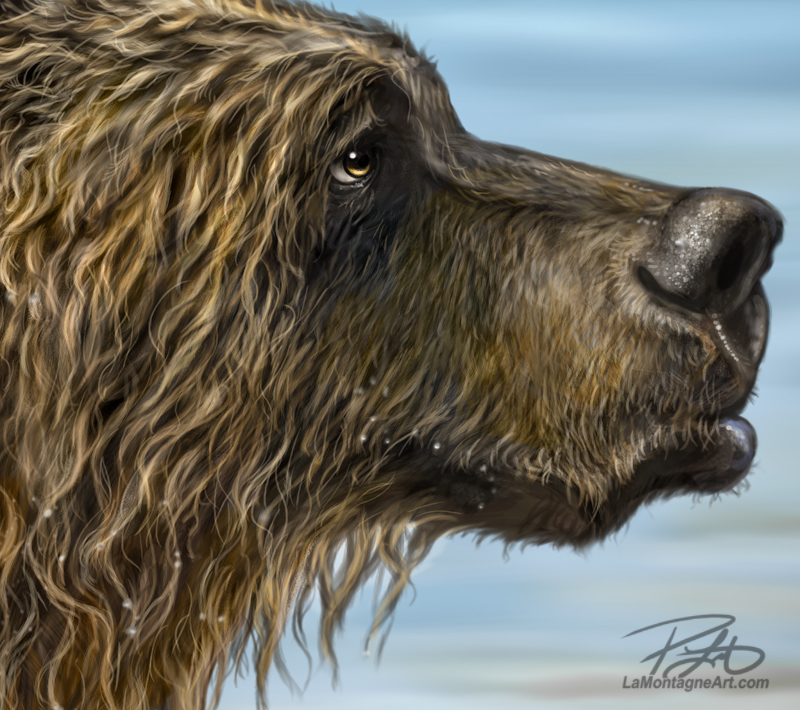 Commissions and Comic-Con
Commissions and Comic-Con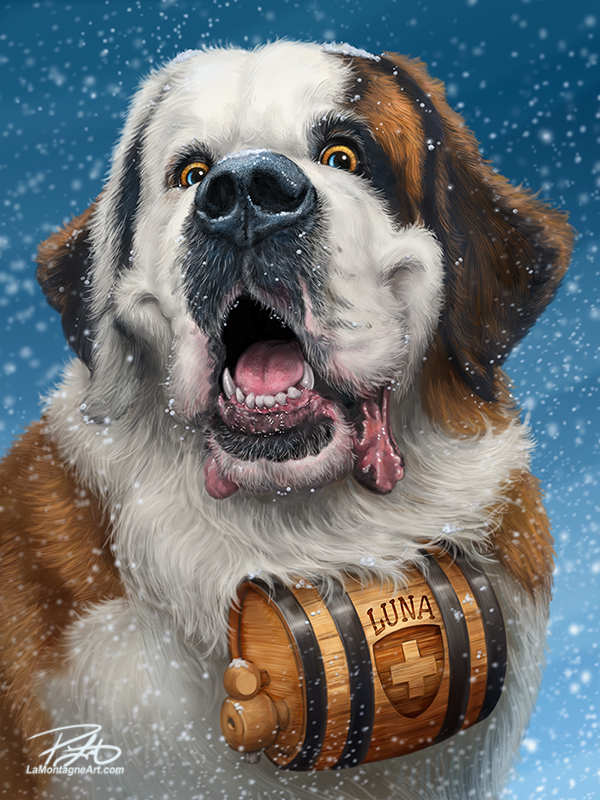
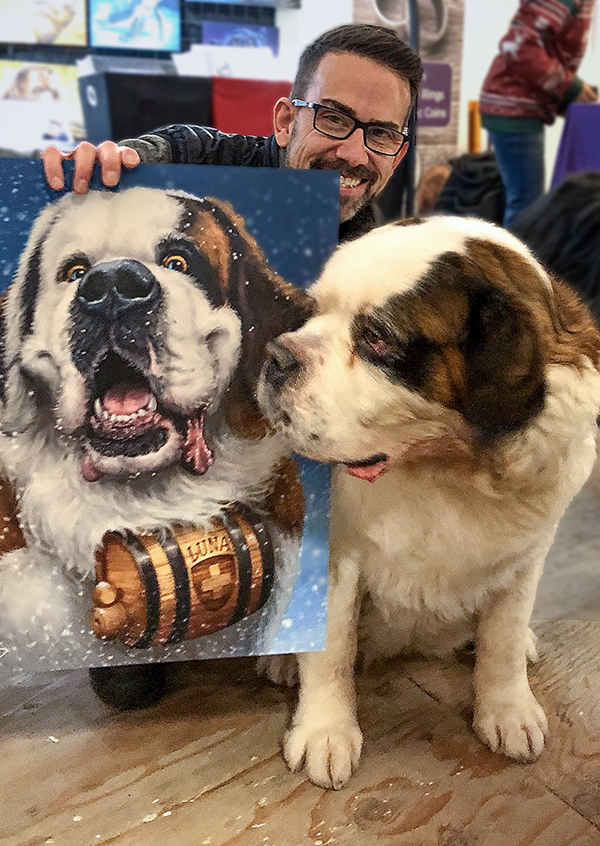
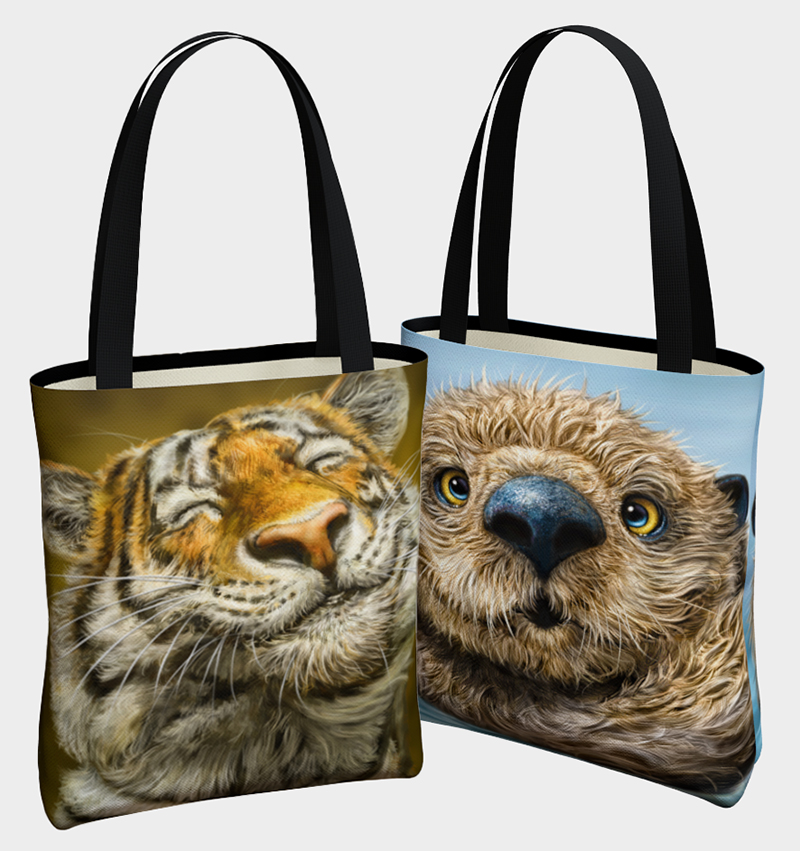 Several people emailed me asking if I’ll have them in the
Several people emailed me asking if I’ll have them in the 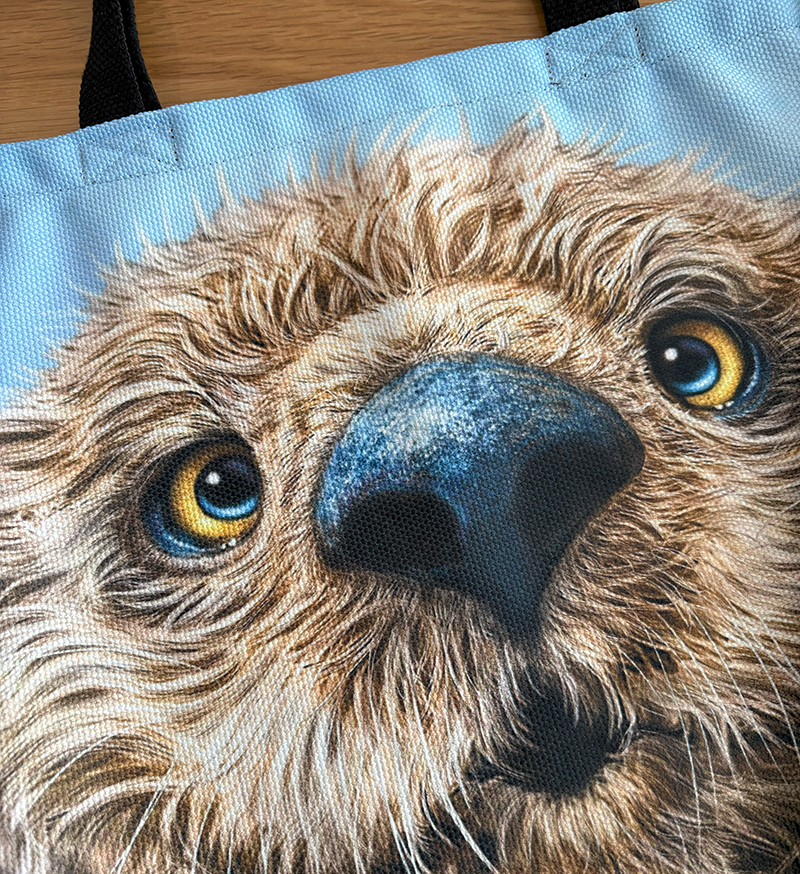 But I’d love to hear your thoughts.
But I’d love to hear your thoughts.
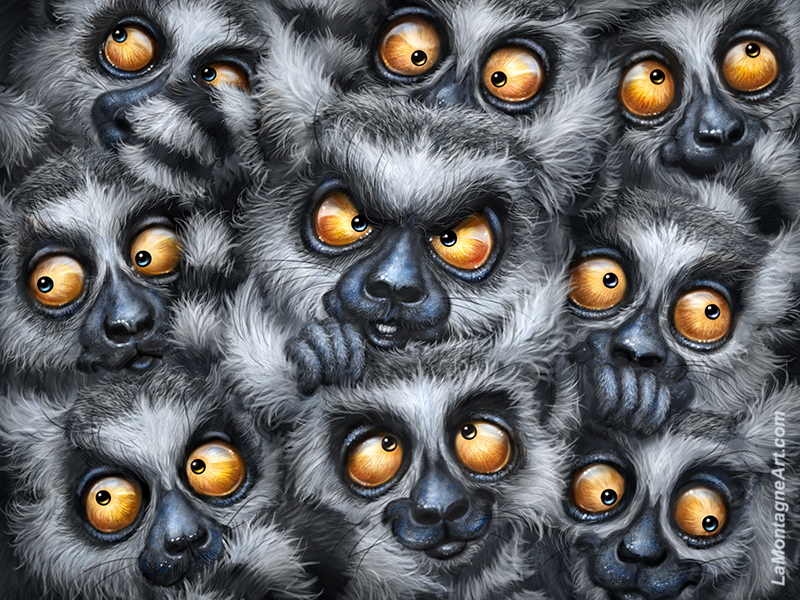 Some paintings come together easily. A reference photo may immediately inspire an idea, I’ll sit down and mock up sketches, and it will almost feel like the image creates itself.
Some paintings come together easily. A reference photo may immediately inspire an idea, I’ll sit down and mock up sketches, and it will almost feel like the image creates itself.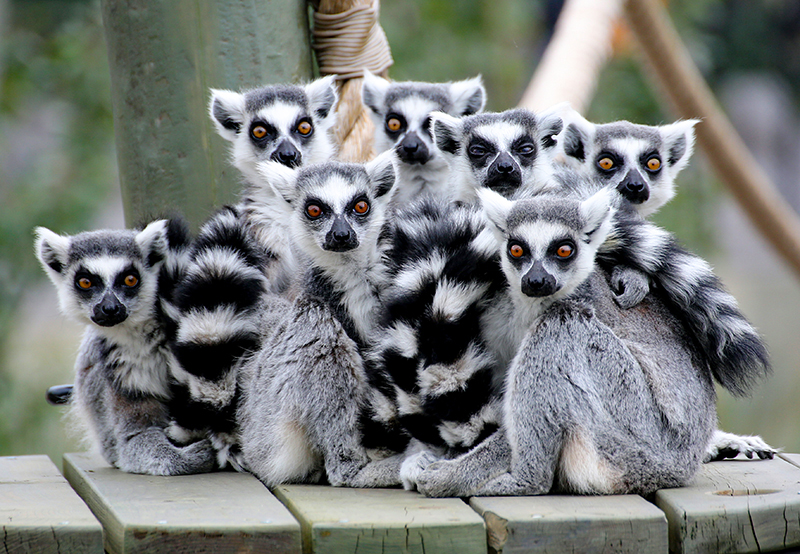 This painting has been something entirely different. Even though I had a clear idea of what I wanted it to look like, I couldn’t get it to feel right. It was inspired by a photo I took at the Calgary Zoo, and I even had the name of the piece before I painted the first brushstroke.
This painting has been something entirely different. Even though I had a clear idea of what I wanted it to look like, I couldn’t get it to feel right. It was inspired by a photo I took at the Calgary Zoo, and I even had the name of the piece before I painted the first brushstroke.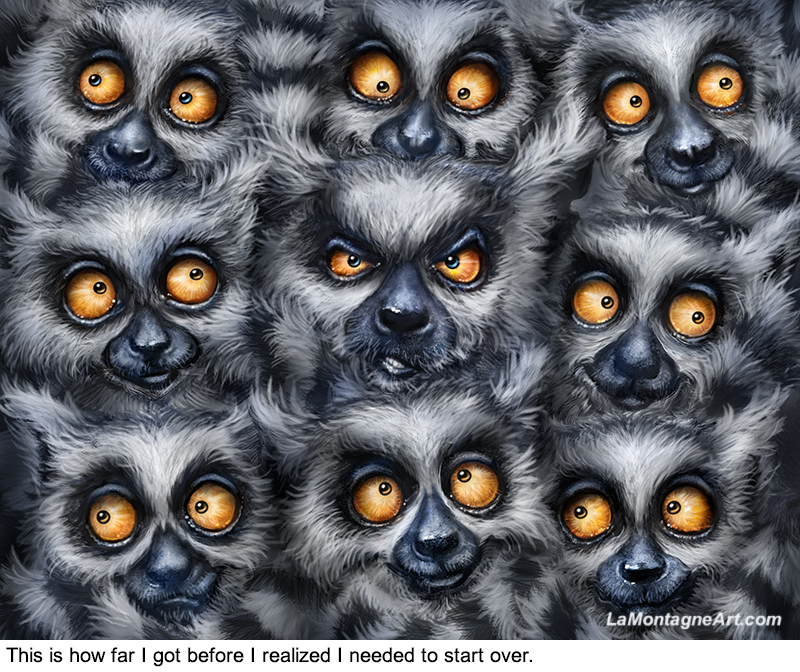
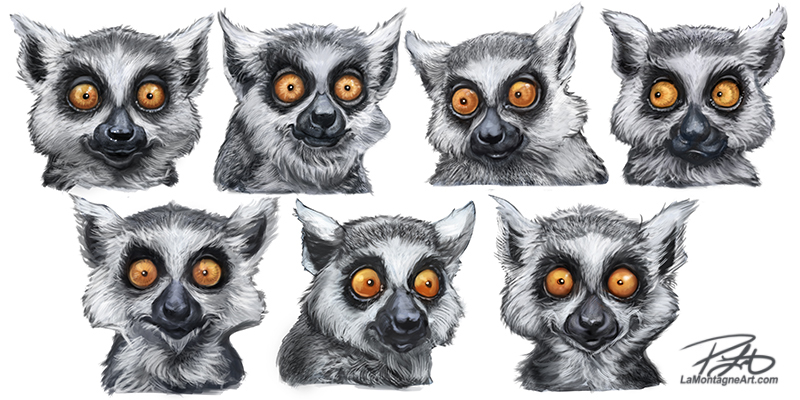 The first go round, I used a specific reference for each lemur I painted and drew them all individually. Even after I assembled them, I kept going back to the individual references for each, and it wasn’t easy to keep track of it all. I made it far too complicated.
The first go round, I used a specific reference for each lemur I painted and drew them all individually. Even after I assembled them, I kept going back to the individual references for each, and it wasn’t easy to keep track of it all. I made it far too complicated.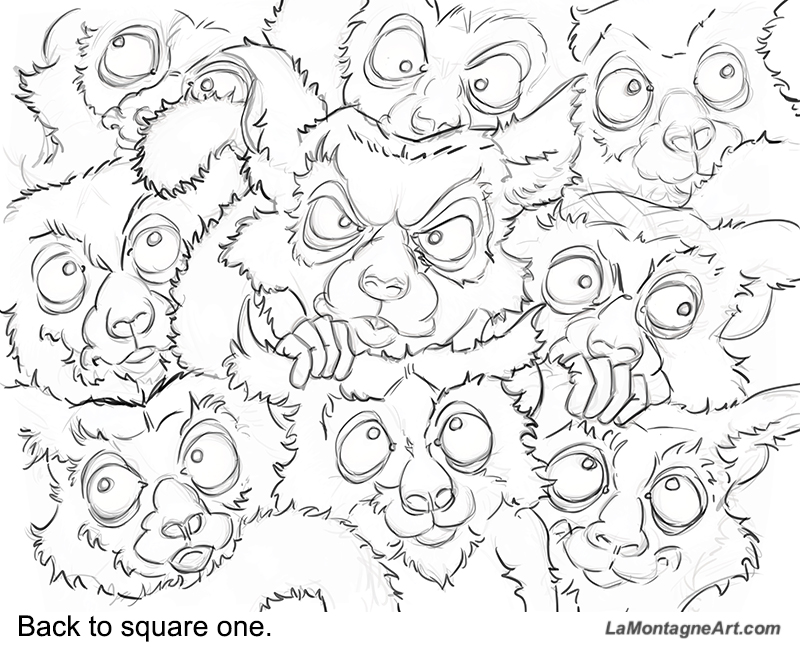 The key to getting this piece back on track was to stop painting individual trees and just paint the forest. Even though this was a challenging painting, with a lot of redrawing and direction changes, I learned from the frustration. These kinds of lessons always contribute to better work in the future.
The key to getting this piece back on track was to stop painting individual trees and just paint the forest. Even though this was a challenging painting, with a lot of redrawing and direction changes, I learned from the frustration. These kinds of lessons always contribute to better work in the future.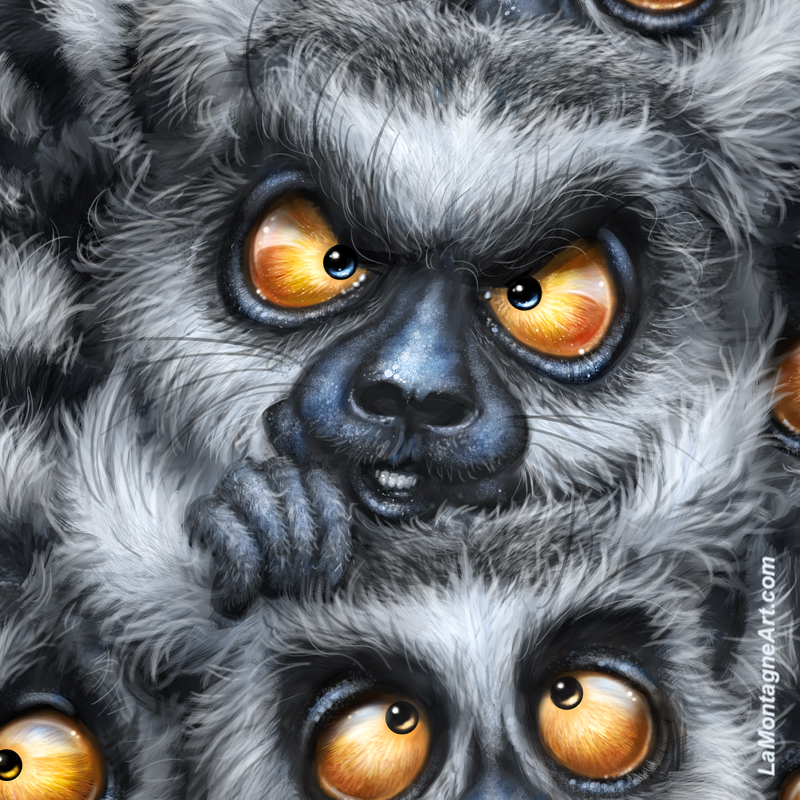 Under these circumstances, my perception of how any finished piece looks is distorted. I have no idea how I feel about this painting and probably won’t for a while. I feel more relief that it’s finally over than satisfaction with the result.
Under these circumstances, my perception of how any finished piece looks is distorted. I have no idea how I feel about this painting and probably won’t for a while. I feel more relief that it’s finally over than satisfaction with the result.
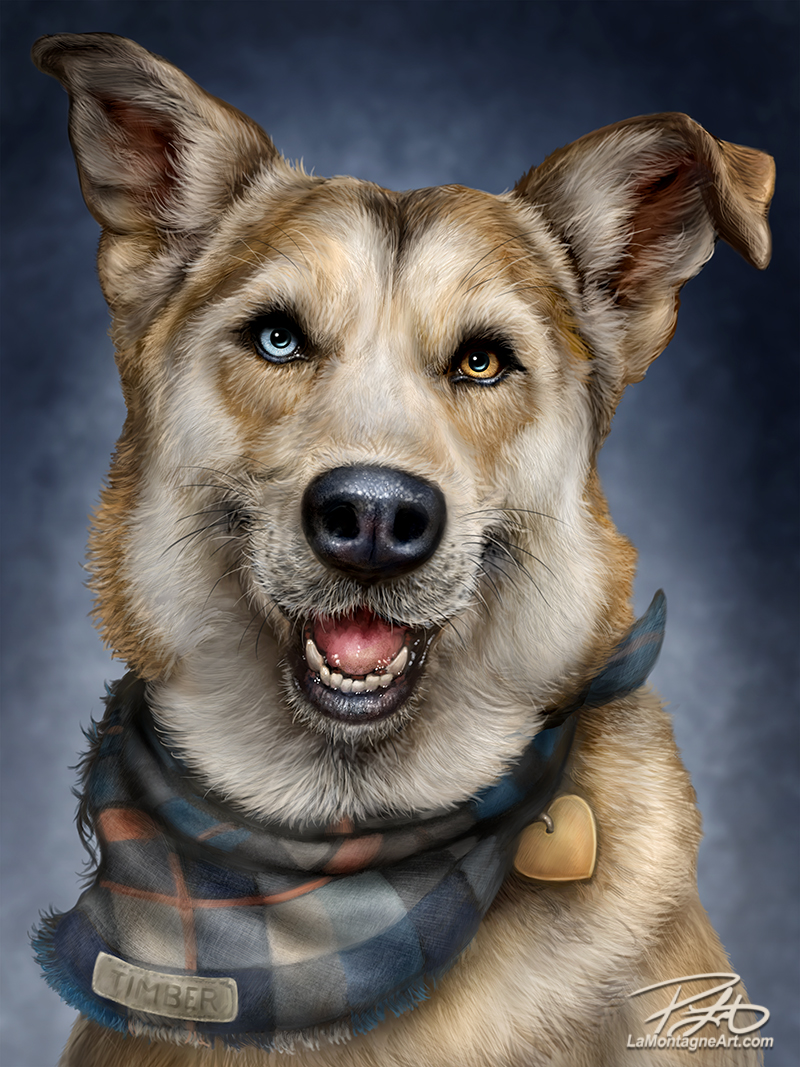 Cindy volunteered with the local SPCA shelter here. And though they had fostered another dog that eventually went to live with her parents in Calgary, they hadn’t found the right one for them until they met Timber.
Cindy volunteered with the local SPCA shelter here. And though they had fostered another dog that eventually went to live with her parents in Calgary, they hadn’t found the right one for them until they met Timber.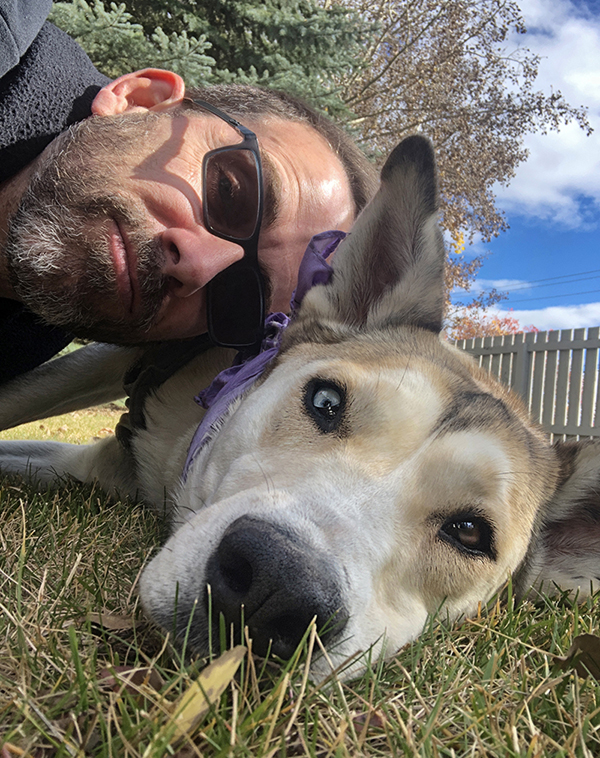
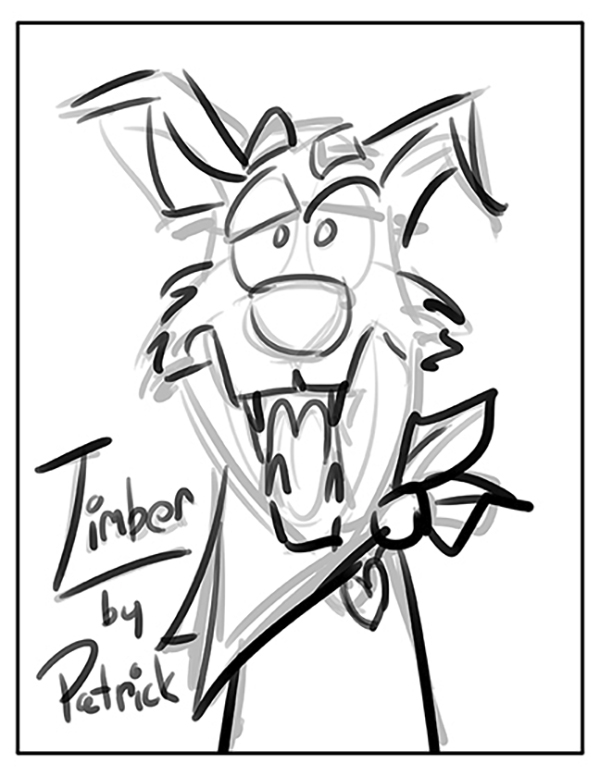 He printed and framed it and sent a photo of it hanging on their wall.
He printed and framed it and sent a photo of it hanging on their wall.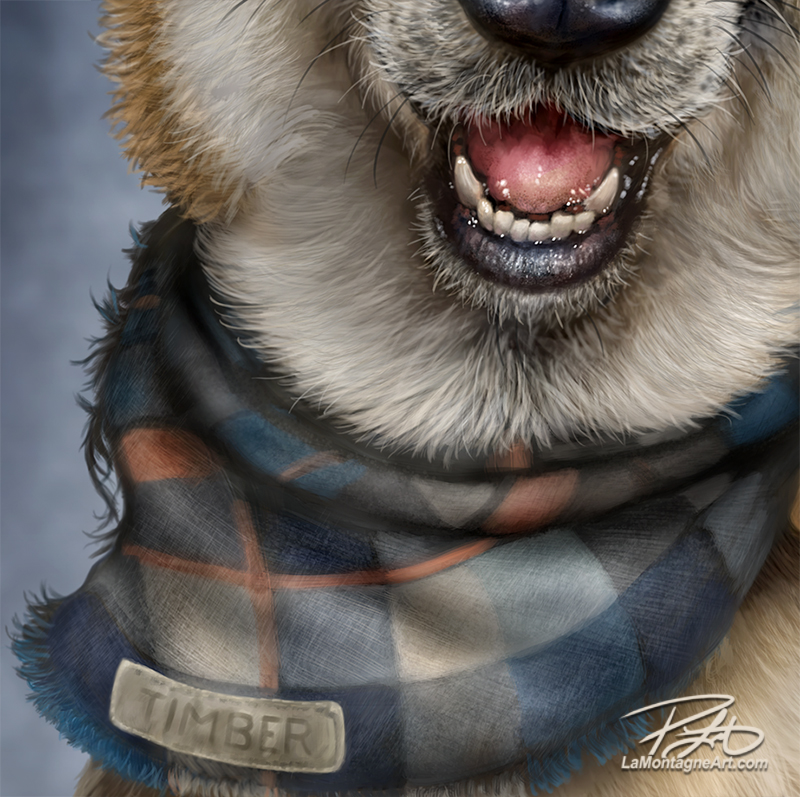 I sent the finished image, and they were thrilled, which made me doubly happy. Because they already had a shadowbox framed 18X24 canvas of my Wolf painting, they wanted Timber’s to match.
I sent the finished image, and they were thrilled, which made me doubly happy. Because they already had a shadowbox framed 18X24 canvas of my Wolf painting, they wanted Timber’s to match.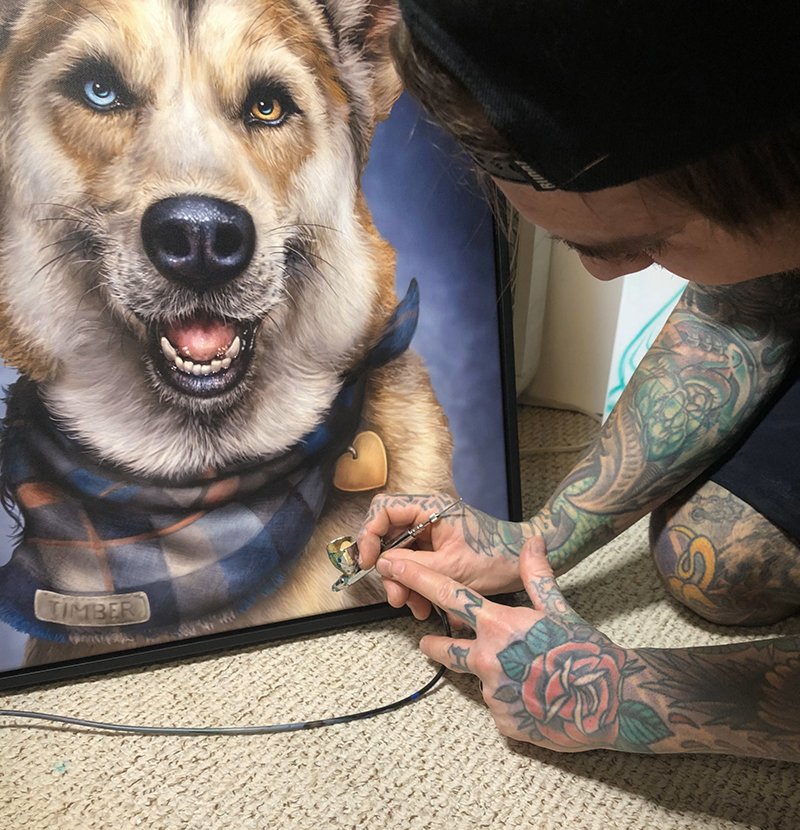 I brought it to Derek’s house a couple of days later, and he matched the colour, finely sprayed the small area a few times, and saved the canvas. You can’t tell there was ever a problem, and you can still see my underlying brush strokes. I held the canvas while he painted with the airbrush, so we staged the above photo after the fact, knowing I’d want to write about it.
I brought it to Derek’s house a couple of days later, and he matched the colour, finely sprayed the small area a few times, and saved the canvas. You can’t tell there was ever a problem, and you can still see my underlying brush strokes. I held the canvas while he painted with the airbrush, so we staged the above photo after the fact, knowing I’d want to write about it.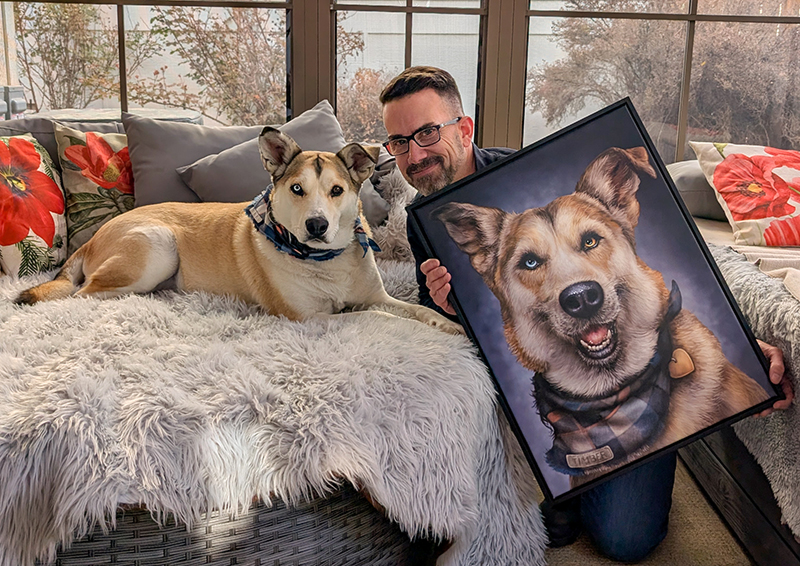 Of course, the best part of any
Of course, the best part of any 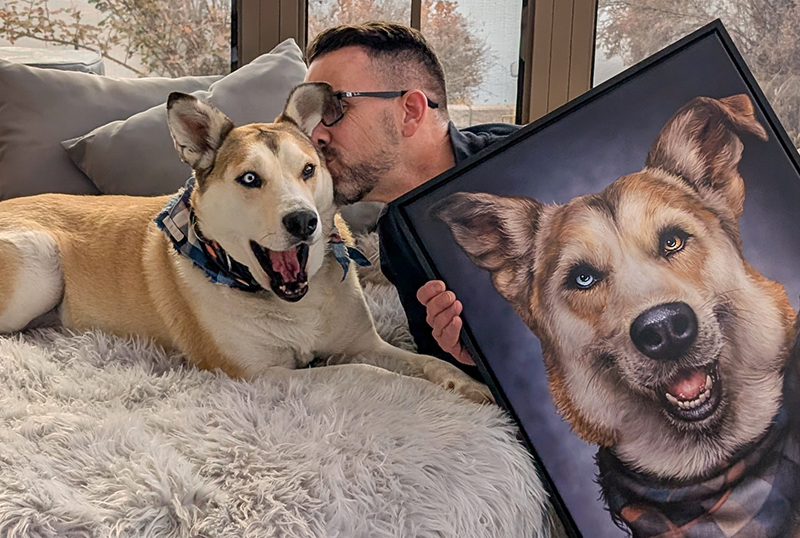


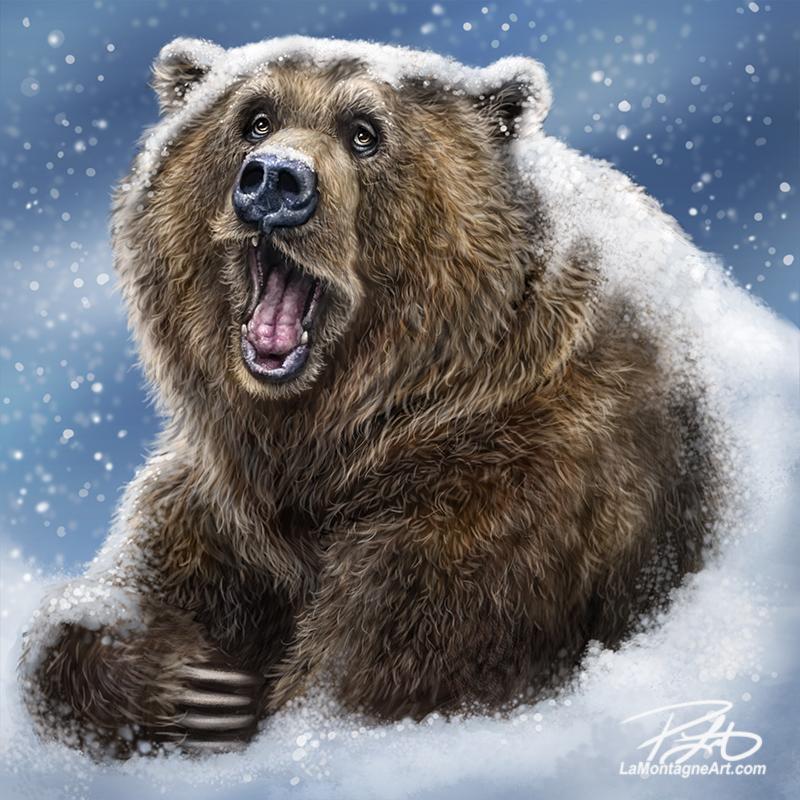 Because I haven’t released a new painting in a while, I did not want to publish yet another post promising something new down the road. So, here’s a new piece: a weary-looking grizzly bear in the snow. I’m calling it Bedtime.
Because I haven’t released a new painting in a while, I did not want to publish yet another post promising something new down the road. So, here’s a new piece: a weary-looking grizzly bear in the snow. I’m calling it Bedtime.